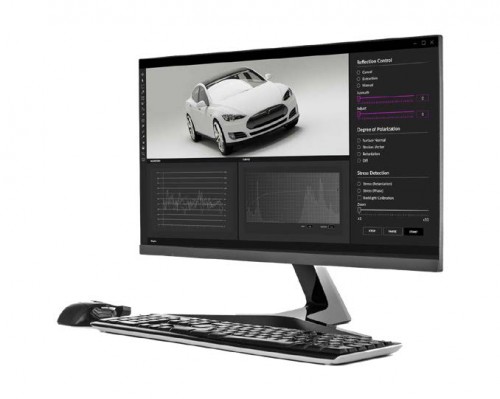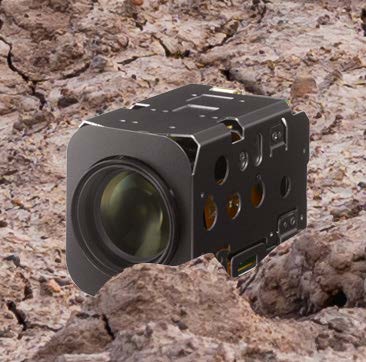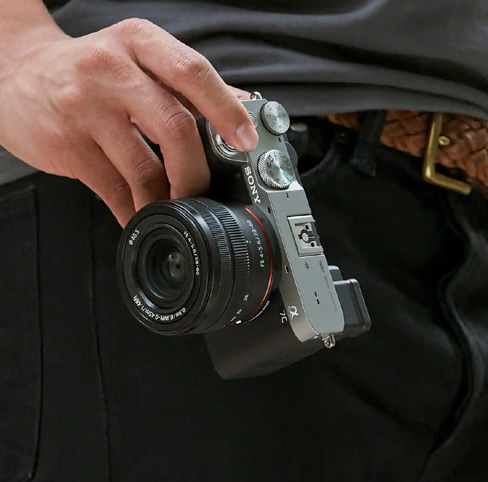Can technology help lower the cost of pothole repairs?
Case study - Sony XCG-H280CR use case. January 2015
Can technology help lower the cost of pothole repairs?
The cost of pothole maintenance is rising quickly and, after a run of bad winters, is reaching unaffordable levels. Here Stéphane Clauss from Sony’s Image Sensing Solutions division examines a video camera based approach that’s being deployed in Holland and could speed road damage detection and cut cost of repairs for UK roads too.
The media focus of this year’s rain has been (quite rightly) on the floods and the damage to farms, especially in areas such as the Somerset Levels. But, the worst downpour in many generations (250 years, to be precise) also had an additional effect on the nation’s roads – especially where they haven’t been maintained properly over many years – with potholes being the end result.
Indeed, 2014 figures from the Asphalt Industry Alliance (AIA) suggests the UK’s roads have up to 2 million potholes and that nearly 9-million vehicles sustained damage to their, wheels or suspension in 2013, up 18 per cent on the previous year. And, according to the RAC, the cost of these repairs is approximately £100 million.
In a 2013 interview with the BBC, David Weeks from the AIA, said “potholes were a symptom, [and] not inevitable,” and also stating that “councils were not given enough money to keep pace with them, let alone for preventative maintenance.”
However, it’s not necessarily a big surprise that the funds aren’t available given the costs associated with their repair. In 2011 the Labour Party announced the results of its local council survey into the cost of repairs. The survey cited that, for the 63 authorities that were able to give a repair bill estimate, the figure was £5.36bn. And by extrapolating this to the entire country, the then shadow roads minister John Woodcock stated: "That would translate into £13.4bn across the country."
Since this survey was undertaken the UK has seen three more extreme winters with 2011-12 and 2012-13 both being exceptionally cold and 2013-14 being exceptionally wet. And while the Department for Transport says more than £3 billion is being spent nationally on improving roads, the bill is rising rapidly, indeed the road authorities for Devon and Cornwall stated in January 2014 that these two counties alone would require over £1 billion for road repairs; blaming “years of under-investment” and saying the “situation has been exacerbated by months of bad weather”.
It is therefore clear that either more money is needed to fix the UK’s roads… or a new way to cut the cost of repairs must be found.
One of the key issues is in the number of man-hours (and therefore the staffing costs) needed for detection itself. An early detection significantly cuts the repair cost. The internet has helped greatly, with virtually all councils crowd sourcing information by implementing a pothole reporting system on their web sites – see Somerset, Surrey and Hull.
But each of these then needs to be checked and prioritised, which means teams of people are required to travel the length of a county to identify these. And this crowd-sourced approach still does not report all, so the traditional approach is still needed: with large numbers of certified specialists slowly travelling the council’s roads by foot or bike to identify holes (which often requires lane or road closures) and prioritise them.
This means that the process is slow and sporadic. And, of course, different inspectors rank road surface damage differently, so subjectivity is being introduced and thereby potentially reducing the effectiveness of the repairs.
But technology might hold the answer and a project from the Netherlands, being implemented by Sony ISS systems integration partner Horus uses video analysis instead to cut down on legwork.
To speed detection, eliminate the need for road and lane closures during inspection and increase safety, Horus has created a car based system that is capable of monitoring up to three lanes simultaneously and detect potholes and maintenance issues at speeds of up to 130kph (80mph).
The system, which has been implemented by Dutch government authorities, as well as contractors such as BAM, BallastNedam, and Heijmans, uses six Sony ISS XCG-H280CR high-resolution colour video cameras modules mounted around the vehicle to give a 360-degree video system. The system is able to deliver high quality images for analysis at both speed and over bumpy, pothole ridden road surfaces.
The camera’s each collect images at 15 frames per second and pass this data via a high speed (Gigabit Ethernet) cable to the car’s on board CPU, which combines each frame with location information from the system’s integrated GPS recorder - ensuring the potholes and other damage can be later re-found without additional searching.
Once back at the office, the system’s information is then transferred to the road maintenance team’s computer for analysis using Horus’s bespoke media player with integrated mapping functionality and auto detection algorithms. This allows an authorities’ team of certified experts to inspect the high definition images to detect new damage, monitor potential damage and compare reports from citizens made through the website – with all analysis done from the safety of office.
In addition to reducing subjectivity, recording at such high speeds has a significant additional advantage. The shift from foot and bikes to cars has meant that the Dutch authorities are now able to monitor the main routes on an almost weekly basis, so the data can now be used to prevent more costly damage from occurring.
By adopting such a system the councils are able to more easily prioritise repairs to ensure potholes that would cause accidents or damage to cars are filled first.
But it should be stated that such systems could be implemented for a wide range of highways maintenance issues. Through the implementation of software algorithms, highways agencies are also able to automatically monitor for and identify a number of additional hazards, such as streetlights with blown bulbs. Horus is also developing a 3D video analysis algorithm to detect roadside barriers that are damaged or warped and therefore likely to be effective if an impact were to occur.
Summary
The cost of pothole maintenance is set to continue rising, especially as climate change brings ever more extreme weather. Early detection of damage will therefore prove essential in future highways maintenance strategies and we need to look to new technologies being implemented elsewhere if we are to minimise these costs in the future.
ENDS
For more information see http://www.image-sensing-solutions.eu for more details.
For further editorial information, please contact:
Frank Grimshaw, Publitek
+44 (0) 1225 470000 / frank.grimshaw [at] publitek.com /
For further product and sales information, please contact:
Matthew Swinney, senior marketing manager, Sony Image Sensing Solutions.
Tel. +44 (0) 1932 817406 / fax +44 (0) 1932 817314 / email: matthew.swinney@eu.sony.com



